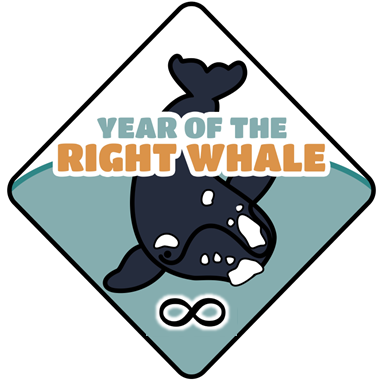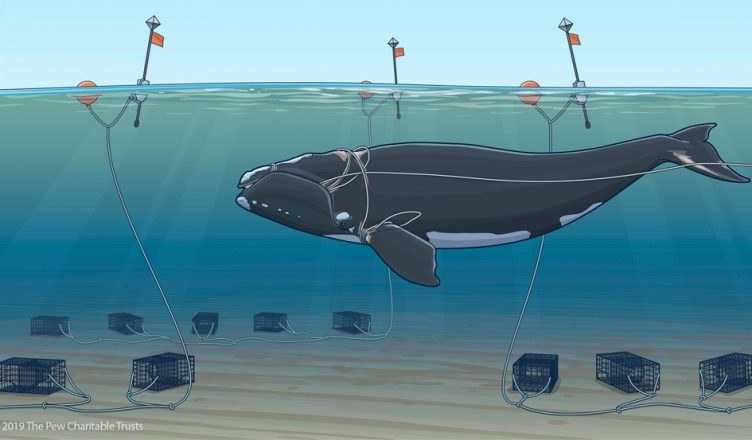Image: The North Atlantic right whale must swim through a maze of buoy lines to go about their lives. Right whales do not have good vision, and the water in the Gulf of Maine is rich with phytoplankton, resulting in very “murky” water. The whales cannot see these lines, and often swim right into them and become entangled in the line.
If you have been following the Year of the Right Whale, you are probably wondering what you can do to help. Well, here is your chance!
The public comment period is currently open for the Atlantic Large Whale Take Reduction Plan (you can read the entire plan here). The National Oceanic and Atmospheric Administration (NOAA) is seeking public comment on new regulations for vertical lines, restricted areas, and line strength. The target risk reduction for this plan is 60%, which can make a HUGE difference for all large whales, including the North Atlantic right whale. These new regulations have the potential to save lives, and with a population of only about 360 individuals, every right whale is important.
Want to see what it’s like to be a right whale in a lobster fishery? Start by hanging some string/rope/streamers from the ceiling. Then close your eyes and try to walk across the room without bumping into any string. It will probably be very difficult. This is what a right whale encounters while swimming through an area with lobster traps. These traps have very long lines, tied to heavy traps that sometimes become wrapped around the whale and dragged. Now imaging having a ball and chain tied around you all the time. That doesn’t sound fun either does it? And a whale cannot reach back with long arms to take it off either.
How can we prevent this from happening? One solution is ropeless fishing gear. With ropeless gear, the vertical lines are contained in a trap, and rise to the surface when activated by a fisherman (usually in a mobile app that uses GPS). This way, the vertical line is only in the water column when a fisherman is working with the traps. The vertical line is then locked back in the trap, and the trap is dropped back down to the ocean floor. Check out this awesome video below of ropeless fishing gear in action.
Ropeless gear is one of the regulations proposed in the take reduction plan. The plan also changes the boundaries of restricted lobster and crab fishing areas in the Gulf of Maine. Certain spots are closed at specific times of the year (with ropeless systems being allowed during these periods). The strength of the rope used in vertical lines is also in this plan. If ropes snap a whale can break free if it becomes entangled.
Public comments on the take reduction plan are being accepted until March 1st. You can submit a formal comment here, and we have written up a template for you to use here. This template highlights important solutions that can help the whales. You can copy, paste, and edit the red text with your personal story about why saving the North Atlantic right whale is so important. NOAA is required to read all public comments before moving forward with the take reduction plan, so yes, YOU VOICE WILL BE HEARD.
It is up to us all now, to save the North Atlantic right whale. We want to be able to see right whales for years to come, and we won’t be able to if they are not protected. Please help us protect them by submitting a comment!
 |  |






